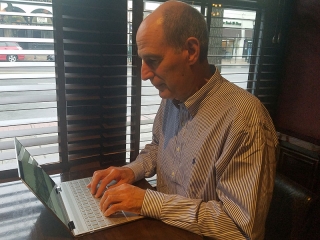
Leadership in a Crisis: Scenarios for Students
27 March 2020Lesson plan for teaching students leadership in times of internal and external crises.
By Kenneth Goldberg, president and founder of Culinary Econometrics
Feedback & comments: This email address is being protected from spambots. You need JavaScript enabled to view it.
The current health and resulting economic crises are clearly unique and devastating events in terms of magnitude and the effect on every facet of life around the world. However, internal and external crises of various magnitudes occur regularly in foodservice and hospitality operations.
External crises would include the events of 9/11 and the post-9/11 recovery, Hurricane Katrina and the 2008 recession. Internal crises would include foodborne illness outbreaks, serious injury to an employee or guest, harassment incidents, and a significant change in business outlook.
Given the current environment, it is an opportune time for culinary and hospitality management students to delve into the subject of leadership in a time of crisis. I suggest designing a group (if possible within your online infrastructure) or individual project based on multiple scenarios. A three-step approach for such a project includes:
- Provide background on leadership and crisis leadership. Ask students – what would they look for from an effective leader during such a time? Is it different than during “normal” times, and if so, how?
Communication is certainly a key element of leadership, especially during any type of crisis. Video clips of different politicians talking about the coronavirus threat over the last few weeks provide examples of oral communication. Have the students analyze how effective each was, using criteria established by the class. Examples include honesty, empathy, and a clear understanding and explanation of the situation.
Technology provides many avenues for leaders to communicate via email, company-wide video among them. Arne Sorenson, Marriott CEO, delivered one such message to the entire company in which he talked about the challenges facing Marriott and the necessary steps being taken. An excellent class forum discussion topic (link below).
Some restaurants web sites display messages on the current closings. They speak volumes on the care given to conveying the right words to their guests. (Links to examples below.) - Ask students to list the actions leaders should take during a crisis situation. This will serve as a foundation for the third step, the scenario analysis. Such a list could include:
- Gather information, whether from external or internal sources.
- Assess the level of the crisis.
- Communicate to government authorities when necessary (foodborne illness or crime).
- Communicate with staff.
- Construct a plan to deal with the specific event if internal such as foodborne illness.
- Develop a plan to help the business overcome an external crisis, such as a significant decrease in business.
- Develop several crisis scenarios. In groups or individually, have students develop and present crisis management plans in response to each situation. The plan should include steps taken prior to the event to prepare the company for a range of situations. Suggested crisis scenarios are:
- Foodborne illness due to ill employee (Hepatitis A for example).
- Foodborne illness due to cross-contamination.
- Severe on-premise injury in the kitchen.
- Sexual harassment complaint from several employees against management-level staff.
- An extreme local weather event.
- A severe national economic downturn.
Notes for post-presentation discussions:
- For the foodborne illness scenarios, it would be helpful to analyze the responses against several real-world incidents over the last few years. There is information on the web about Chipotle’s 2015 incidents. In the NY area, there was a case of Hepatitis A at BarTaco in 2017 in which the company had a somewhat disjointed response. See link below to an article on foodborne illness episodes and responses.
- For the severe economic downturn scenario, to what extent did the group take the survival of the company into account?
When the Malden Mills factory in Lawrence, Mass., burned down in 1995, the owner Aaron Feuerstein, vowed to rebuild the factory in Lawrence and to keep every worker on the payroll while the factory was rebuilt. This won him accolades from many, including President Clinton. However, his decisions cost the business, which had been in his family for three generations, millions and he eventually lost control of the company. Engage the students in an online discussion on Mr. Feuerstein’s decision. - For all scenarios – discuss how much each group put into planning and advance preparedness.
Preparedness played a role for one firm during the 9/11 attacks. Rick Rescorla was head of security for Morgan Stanley, which occupied 22 floors in the south WTC tower. Following the 1993 car-bomb attack in the WTC basement, he was convinced the towers would be targets in a future attack. He created an evacuation plan, which the entire staff practiced over and over. After the north tower was hit, the employees knew exactly what to do, and 2,687 employees marched down the stairs out of the building.
Best wishes and good luck. Let me know if I can help in any way.
Resources and readings:
Coronavirus closings message: http://www.zahavrestaurant.com/ and http://www.abefisherphilly.com/
Marriott CEO message to the company: https://t.co/OwsF14TZgb
Malden Mills and Aaron Feuerstein: https://www.massmoments.org/moment-details/fire-destroys-malden-mills.html
Foodborne illness incidents and analysis: https://digitalcommons.butler.edu/jiass/vol20/iss1/5/
Rick Rescorla and 9/11: https://americamatters.com/rick-rescorla-saved-2687-lives-on-september-11
